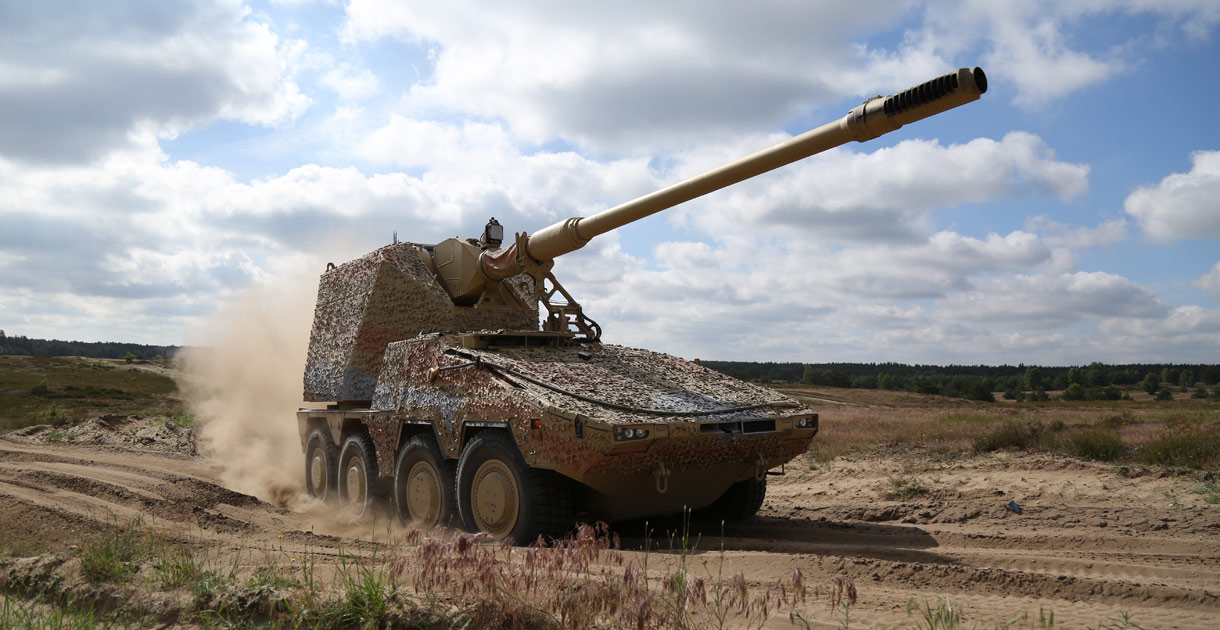
The UK and Germany have unveiled plans to jointly develop the Remote-Controlled Howitzer 155mm Wheeled Artillery System (RCH 155), which will be mounted on Boxer armoured vehicles.
This announcement was made during a meeting between Prime Minister Rishi Sunak and German Chancellor Olaf Scholz in Berlin.
The new-built artillery systems will be constructed in both the UK and Germany, promising to bolster job creation and strengthen the defence manufacturing sectors of both nations, according to the Ministry of Defence.
The collaboration comes at a crucial time as Europe faces renewed security challenges. The system is designed to provide the armed forces of both countries with a significant enhancement in ground warfare capabilities.
Prime Minister Sunak spoke of the importance of the partnership, stating, “The UK and Germany are European powerhouses. Together, we are stronger – whether that is defending against Russian aggression or driving economic growth and technological advance. Today we are opening a new chapter in our relationship, one that will make us safer and more prosperous. At this dangerous moment for the world, the UK and Germany are standing side by side to preserve security and prosperity at home and across our continent.”
The Mobile Fires Platform (MFP) programme aims to modernise British 155mm capabilities, replacing the AS-90.
A Look at the RCH 155
The RCH 155, also known as the Remote-Controlled Howitzer 155 mm, represents a significant advancement in artillery technology. Developed and manufactured by the German defence company Krauss-Maffei Wegmann (KMW), the RCH 155 was designed based on the successes of the Panzerhaubitze 2000 and the Donar artillery system. Utilising the Boxer chassis.
Specifications and Features
- Type: Self-propelled artillery
- Designer: Krauss-Maffei Wegmann
- Unit Cost: Approximately €12 million for initial orders
- Mass: Under 39 tonnes
- Dimensions: Length of 10.4 metres, width of 2.99 metres, and height of 3.60 metres
- Crew: Two (commander and driver)
- Armament: Main armament consists of a 155 mm calibre L/52 gun from Rheinmetall, capable of a firing range up to 54 km with enhanced projectiles. Secondary armaments include an optional remote-controlled weapon station.
The RCH 155 is not only powerful but also highly automated, designed to function with minimal human intervention. Its automation allows for operations like firing on the move—a first for most howitzers—significantly increasing its operational effectiveness by minimising the time stationary, thus reducing vulnerability to enemy fire.
Operational Capabilities
- Engine Power: Equipped with an MTU 8V199 TE21 diesel engine, delivering up to 816 horsepower.
- Mobility: Can reach speeds up to 103 km/h on roads, with an operational range of 700 km.
- Ammunition Capacity: Carries 30 fused rounds and 144 modular propellants, with a maximum rate of fire of 9 rounds per minute.
- Protection: Crew protection against heavy machine gun fire, artillery fragments, mines, and equipped with NBC (Nuclear, Biological, Chemical) protection.
Interestingly, the builders say it is designed for future adaptations to be operated remotely, reducing the need for crew exposure in hazardous conditions.